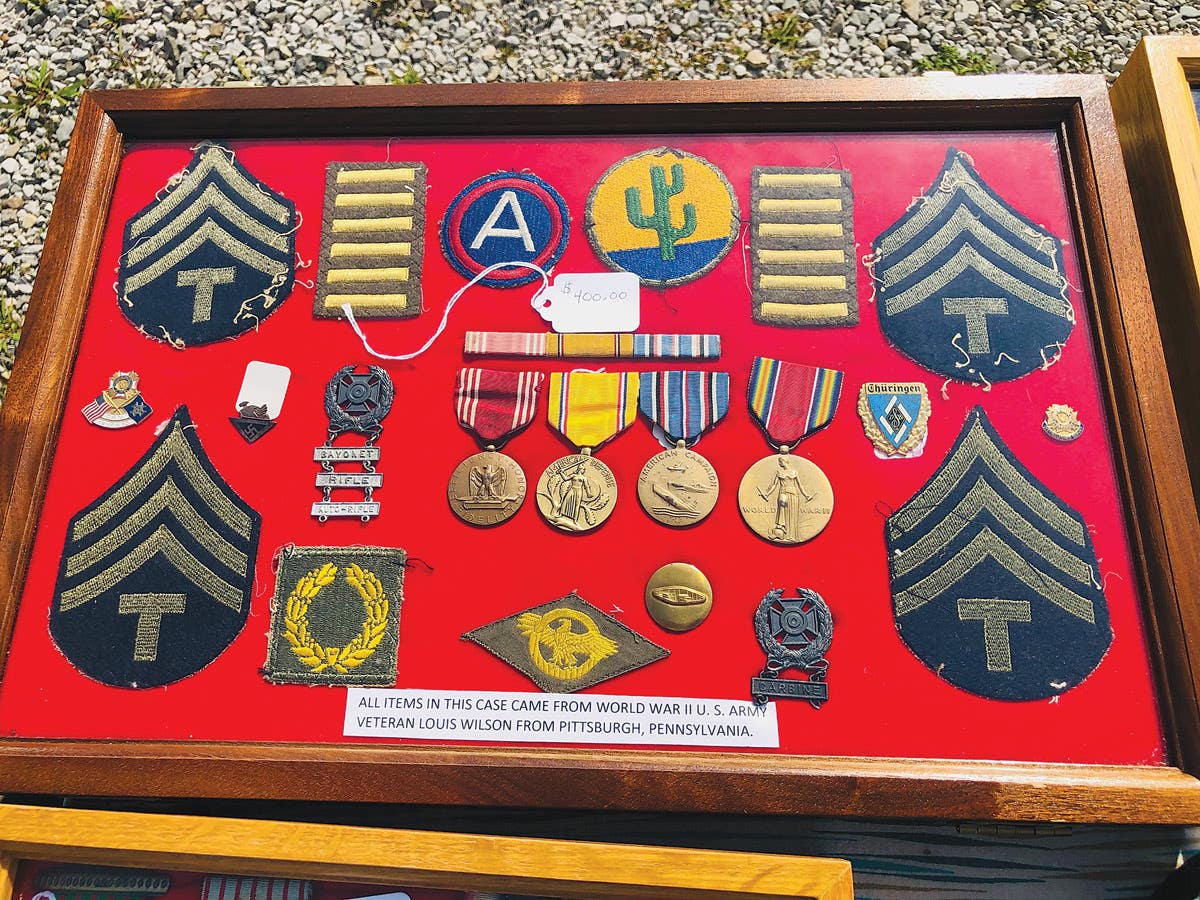Law & Order: How strong is your desire to possess?
Greetings, Today’s tale requires a bit of background. Please permit me to introduce you to the USS Emmons (DD-457/DMS-22), a Gleaves-class destroyer of the United States Navy, named for Rear…
Greetings,
Today’s tale requires a bit of background. Please permit me to introduce you to the USS Emmons (DD-457/DMS-22), a Gleaves-class destroyer of the United States Navy, named for Rear Admiral George F. Emmons (1811–1884).
Launched on Aug. 23, 1941, by Bath Iron Works Corp., Emmons was commissioned on Dec. 5, 1941, and placed under the command of Lieutenant Commander T. C. Ragan. She sailed from Norfolk on Jan. 31, 1942, for her shakedown to Callao, Peru. Taking several Peruvian officers on board, she cruised for Valparaiso, Chile, before returning to Boston via several ports in Ecuador. Thereafter, she patrolled New England waters before escorting Ranger (CV-4) across the Atlantic to the Gold Coast.
Between July 26-31, she escorted the battleship HMS Duke of York to Iceland and back to Scapa Flow. Emmons returned to New York in September 1942. On April 2, 1943, Emmons put to sea via Argentina for Scapa Flow, where she joined the British Home Fleet again.
Between December 1943 and April 1944, Emmons guarded carriers during their operations at Newport and in Casco Bay, aiding in the training of aviators. During anti-submarine operations, her group teamed with British aircraft to sink the German submarine U-616, and the next day, Emmons sailed for England, and final preparations for the invasion of France.
After guarding pre-assault minesweeping, she joined in the heavy bombardment prior to the landing. She remained off the beachhead for three days as watchdog for the vast armada of ships lining up with men and supplies, then retired across the English Channel to Plymouth, England, screening the Texas (BB-35).
Her duty in the Atlantic wrapped up when the Emmons put into Boston in November 1944, for conversion to a high-speed minesweeper. After training exercises in the Hawaiian Islands, she entered Ulithi to stage for the invasion of Okinawa. Her squadron put to sea on March 19, 1945, for the dangerous, vital task of clearing Okinawa's waters for the assault ships to hit the beaches.
On April 6, during one of the first of the massive kamikaze attacks, she became a target as she sailed with Rodman (DMS-21). One of the first planes to attack struck Rodman, and as Emmons circled the stricken ship to provide antiaircraft cover, both ships were overwhelmed by the suicide-bent Japanese planes. Though many were shot down, five struck Emmons -- almost simultaneously. One hit her fantail, the rest to starboard of her pilot house, of No. 3 gun mount on her waterline, aft, and the port side of her combat information center. Crippled and ablaze with ammunition exploding, damage control was futile.
Emmons’ gallant crew, who had already won the Navy Unit Commendation for Okinawa, lost 60 dead, 77 wounded. The rest had to abandon ship. The following day, the smoldering hulk was sunk to prevent its falling into enemy hands.
A MISSING DATA PLAQUE
A ship’s “data plaque” was usually a brass plate cast or embossed with information on the ship's significant dates and builder. Normally, there would be just one made for each ship, so each example tends to be unique. As such, naturally they command collector interest.
There aren’t many legitimate ways for a data plaque from a U.S. Navy vessel to end up in private hands. The U.S. Navy retains ownership of ships’ materials, both serviceable and sunk vessels. The only time that such an item could end up in private hands would be at the point when a ship was sold for scrap.
A data plaque is an important part of a ship and a lot of times, these plaques would be removed from the vessel before scrapping and presented to the the town, officer or other entity associated with the ship. It is also possible that someone could acquire a plaque from the company that bought the ship for scrap. It is conceivable for these plaques to eventually end up in the collectors’ market.
With all that said, plaques removed from vessels sunk in combat are a whole different matter. These remain ships in the Navy’s commission. Anyone who disturbs or removes items from a combat-sunk vessel is committing a crime. Therefore, I was quite surprised when a reporter from FoxNews contacted me to comment on the stolen plaque from the sunken remains of the Emmons.
Naturally, most anything associated with WWII U.S. Navy vessels are collectible. Furthermore, anything associated with U.S. Navy vessels that were in combat and sustain damage or even sunk are extremely collectible and command higher prices.
Honestly, I cannot imagine any legal justification for anyone to have the plaque of the USS Emmons. Sure, collectors would love to have such an item -- the data plaque from the Emmons would be the centerpiece of a collection that focused on WWII U.S. Navy “tin can” sailors or the Battle of Okinawa.
Most recognize that there is a legal consideration when removing something from a sunken vessel. Most serious, astute collectors will avoid such pieces. But, the desire to possess is strong. Consider the art lover who just can’t resist owning a great painting even though they know it is stolen.
Do I really think it was monetary gain that motivated the theft of the plaque? Not really. Plaques from scrapped U.S. Navy vessels will sell for about $700-$1,500, depending on the ship’s record. If a plaque from a sunken vessel somehow appeared on the market with a “free-and-clear” waiver from the U.S. Navy, it might sell for as much as $5,000 to the right collector. The market is very small for such an item, though. A person would have to work hard to find a buyer and $5,000 just isn’t worth risking Federal jail time.
No, I don’t think it was financially motivated, but rather, the result of a souvenir hunter... someone who dove the wreck who thought it would be a neat memento of their adventure. Chances are, they had no idea they were breaking the law when they removed it.
The chances of the Emmons’ plaque appearing on a dealer’s list or a show table are quite remote, but we can still work together to discourage further destruction of our sunken vessels, battlefields or soldiers’ tributes. If you hear someone bragging about diving a wreck, see someone selling veterans’ grave markers or encounter a guy with a trunk-load full of dug relics, ask them if they have a clear, legal claim to the items. Chances are they don’t, and your asking may just cause them to reconsider continuing in the illegal destruction of our monuments, cemeteries and battle fields.
Preserve the history,
John Adams-Graf
Editor, Military Trader and Military Vehicles Magazine
John Adams-Graf ("JAG" to most) is the editor of Military Trader and Military Vehicles Magazine. He has been a military collector for his entire life. The son of a WWII veteran, his writings carry many lessons from the Greatest Generation. JAG has authored several books, including multiple editions of Warman's WWII Collectibles, Civil War Collectibles, and the Standard Catalog of Civil War Firearms. He is a passionate shooter, wood-splitter, kayaker, and WWI AEF Tank Corps collector.








